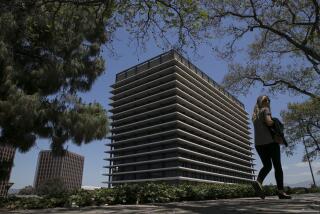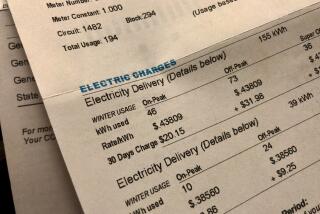Editorial: If California is serious about fighting climate change, lawmakers have to commit to 100% clean energy
- Share via
One of the great success stories in California’s fight against climate change has been the rapid greening of the state’s electrical grid.
In 2002, when California enacted its first target for green energy, the state relied heavily on electricity generated from fossil fuels, including coal and natural gas. Just 12% of the supply came from renewable energy sources, such as solar, wind and geothermal power. The renewable portfolio standard the state adopted that year was dubbed the nation’s most ambitious green power goal; it required the state’s three largest investor-owned utilities to produce 20% of their energy from renewable sources by 2017.
Within a few years, it became obvious that 20% was going to be easy to reach, so lawmakers accelerated the mandate to 20% by 2010. Then they upped to standard even more — first to 33% by 2020, then to 50% by 2030. Even those targets have become attainable. Utilities are on track to deliver 50% renewables by 2020, a full decade before the deadline.
Now California lawmakers are considering the most ambitious target of them all: requiring all utilities to obtain 100% of their power from renewable or zero-carbon sources by 2045.
The sooner California sets the target of 100% renewable and zero-carbon energy, the better.
Senate Bill 100, written by Sen. Kevin de León (D-Los Angeles), would first accelerate the existing renewable portfolio standard to require that utilities provide 60% of their power from renewables by 2030. That target shouldn’t be much of a stretch, given the growing number of solar and wind power projects across the West that are producing electricity more cheaply than fossil fuel power plants.
Weaning the state completely off electricity produced from fossil fuels is a much more challenging job — in part because nobody knows exactly how it will be done. California still relies on power plants fueled by natural gas to provide electricity when renewables aren’t available. Industrial-scale batteries can store renewable power for when the sun isn’t shining or the wind isn’t blowing, but there are few in use by utilities. There are other power storage technologies being developed but, again, they’re still in the nascent stage.
SB 100 would give state agencies and utilities flexibility to address the remaining 40% of the electricity supply. The bill says the power has to be “carbon free,” which means the production doesn’t emit the greenhouse gases responsible for global warming. That’s a broad category that would include hydropower generated by dams, which is a major source of fossil-fuel-free electricity in California but not counted as renewable energy. It also would encompass new technologies that might emerge over the next two decades.
Because the electricity sector is evolving and it’s difficult to set policy 27 years into the future, the bill does not create an ironclad 100% renewable mandate. Rather, it sets an aspirational target, a planning goal for the state. There are no penalties if the state doesn’t hit 100% by 2045. That helps protect against economy-damaging power shortages and cost increases that could result from an inflexible and overly ambitious mandate.
Critics of SB 100, including business groups and the state’s major power companies, have asked, “Why now?” California already is ahead on its clean power targets. Plus, utilities face an immediate and expensive challenge of making their systems resistant to more climate-change-fueled wildfires, which could increase electricity rates.
Enter the Fray: First takes on the news of the minute from L.A. Times Opinion »
But if not now, when? To meet its incredibly ambitious greenhouse gas reduction goals, California will have to transition to a carbon-free electricity sector. Senate Bill 32, passed in 2016, requires the state to cut greenhouse emissions to 40% below 1990 levels by 2030. That will require the state to more than double the rate at which it has been cutting greenhouse gases. Greening the electrical grid is probably cheaper and easier than, say, switching 30 million cars, trucks and motorcycles from fossil fuels to electricity or other zero-emission technology.
The sooner California sets the target of 100% renewable and zero-carbon energy, the better for creating a road map on how to get there efficiently and affordably. Power plants and power purchase agreements often last 30 to 40 years; utilities need to know California’s clean-energy plans now so they don’t, for example, build new natural gas power plants that would be useless in two decades.
Making a long-term commitment to green and carbon-free power also will send a strong signal to the market. It will prompt more investments in renewable electricity, encourage innovation in new clean energy technology, and push the upgrades to grids and transmission lines needed to make 100% clean electricity a reality.
The world is warming, and the effects are going to be devastating. There will be more searing summer days, more severe droughts, floods and wildfires. The work of slowing climate change cannot wait, and California should keep leading it.
Follow the Opinion section on Twitter @latimesopinion and Facebook
More to Read
A cure for the common opinion
Get thought-provoking perspectives with our weekly newsletter.
You may occasionally receive promotional content from the Los Angeles Times.










